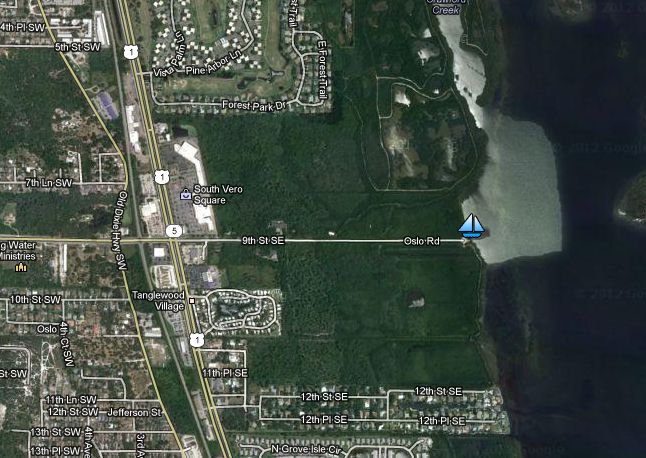
INDIAN RIVER COUNTY — The biggest ecological controversy in Indian River County at the moment is the dispute about whether to expand the Oslo Road Boat Ramp, and at today’s County Commission meeting Dr. Grant Gilmore, the area’s top expert on fish in the lagoon, reiterated his opposition to the project.
Gilmore said the mainland shore of the lagoon adjacent to the existing well-used boat ramp is unique in being a critical nursery for four kinds of game fish: spotted sea trout, red drum, snook and tarpon.
“In more than 40 years of studying fish populations in the lagoon I have never seen another locale where all four species develop,” Gilmore told commissioners.
He said the importance of the area to local and regional fish populations has increased over the past several years as the lagoon’s ecology has collapsed to the north, with massive seagrass, fish and marine mammal losses.
“Our valuable fisheries have been experiencing declines due to loss of habit and other causes and I encourage the use of the Oslo Ramp area for conservation, not development,” said Gilmore, who was a founding scientist at Harbor Branch Oceanographic Institute and today is Senior Scientist at Estuarine, Coastal and Ocean Science, Inc.
The county has been pushing the boat ramp expansion for more than six years and has spent more than $1 million in taxpayer money to try and get the project going, despite widespread opposition. During the six years, it has been turned down by every applicable state and federal agency on environmental grounds. In response, it has repeatedly scaled down and otherwise modified the project, without ever giving up on the idea.
St. John’ River Water Management District finally approved the project in late summer, but Pelican Island Audubon Society and Vero Beach Ecologist Dr. David Cox filed a petition to have the permit reviewed by an administrative law judge.
Gilmore, Cox, Pelican Island Audubon Society President Dr. Richard Baker, a University of Florida Biology Professor Emeritus who has worked near the boat ramp for decades, and numerous other marine biologists and conservation organizations are adamant expanding the boat ramp will damage fish nurseries and threaten marine mammals and the county’s remaining seagrass beds.
A hearing on the matter is scheduled for February, and Deputy County Attorney William DeBraal cautioned commissioners before Gilmore spoke about commenting on a matter up for judicial review or taking action on a matter brought before them as a public discussion item.
Possibly bearing DeBraal’s words in mind, none of the commissioners commented from the dais on Gilmore’s presentation. Commission Chairman Peter O’Bryan thanked him for his comments and then moved on to the next agenda item.
The commissioners lack of response appeared to surprise Gilmore.
After the meeting, DeBraal said commissioners can in fact comment on the boat ramp project if they want to.
Commissioner Joe Fletcher then said the county’s action on the boat ramp matter was a balancing act.
“I consider Dr. Gilmore to be the expert on estuarine studies in our lagoon, and what he says makes a great deal of sense. This is not subjective. It is matters of fact. At the same time I feel there is a shortage of boat access in the southern part of the county.”
Commissioner Tim Zorc made a similar comment about the need to balance essential conservation with public access.
Both commissioners seemed open to hearing new information before making final decision about the matter.
As it stands, if the administrative law judge finds in favor of the petitioners opposed to the ramp expansion — which would involve dredging the existing channel from the ramp to the Intracoastal Waterway, building a new dock, paving Oslo Road leading to the ramp, and building a parking lot that would require filling in wetlands — the matter will be decided.
If the judge overrules the petitioners’ objections, the matter will come back before the Commission at the bidding and final project approval stages next spring, which means commissioners still have time to change their minds about the wisdom of spending yet another million of the taxpayer’s dollars on a project almost all area lagoon scientists say would damage the environment.



